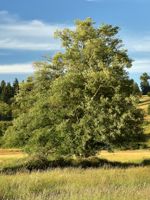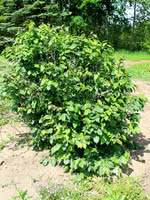Mon-Fri 9am - 5pm Mountain time
Beaked Hazelnut vs Red Alder
Alnus rubra
Corylus cornuta
CUSTOM GROW
NOT AVAILABLE THIS SEASON - MIGHT RETURN
Red Alder is a fast-growing deciduous tree native to western North America. Through its nitrogen-fixing roots and nitrogen-rich leaf litter, Red Alder improves soil fertility and supports the growth of surrounding plants. This makes it especially valuable on disturbed sites following logging, construction, or fire. A classic pioneer species, it often colonizes bare ground and enhances conditions for longer-lived conifers to follow.
Red Alder stabilizes soils on streambanks and disturbed slopes, reducing erosion and aiding restoration. It also supports wildlife: birds and small mammals eat the seeds and buds, deer and elk browse the foliage, and bees are drawn to the pollen-rich catkins in spring.
Red Alder also has commercial importance, with its strong yet workable wood widely used for furniture, cabinetry, veneer, and pulp. The tree takes its name from the rusty-red color the bark turns when cut or bruised.
Beaked Hazelnut is a multi-stemmed, deciduous shrub native to North America.
It features smooth, grey bark and edible nuts. Beaked Hazelnut prefers a rich sandy-clay loam but will grow on poorer sites, and can be used as an understory shrub.
Note: You want more than one hazelnut to improve yields.

